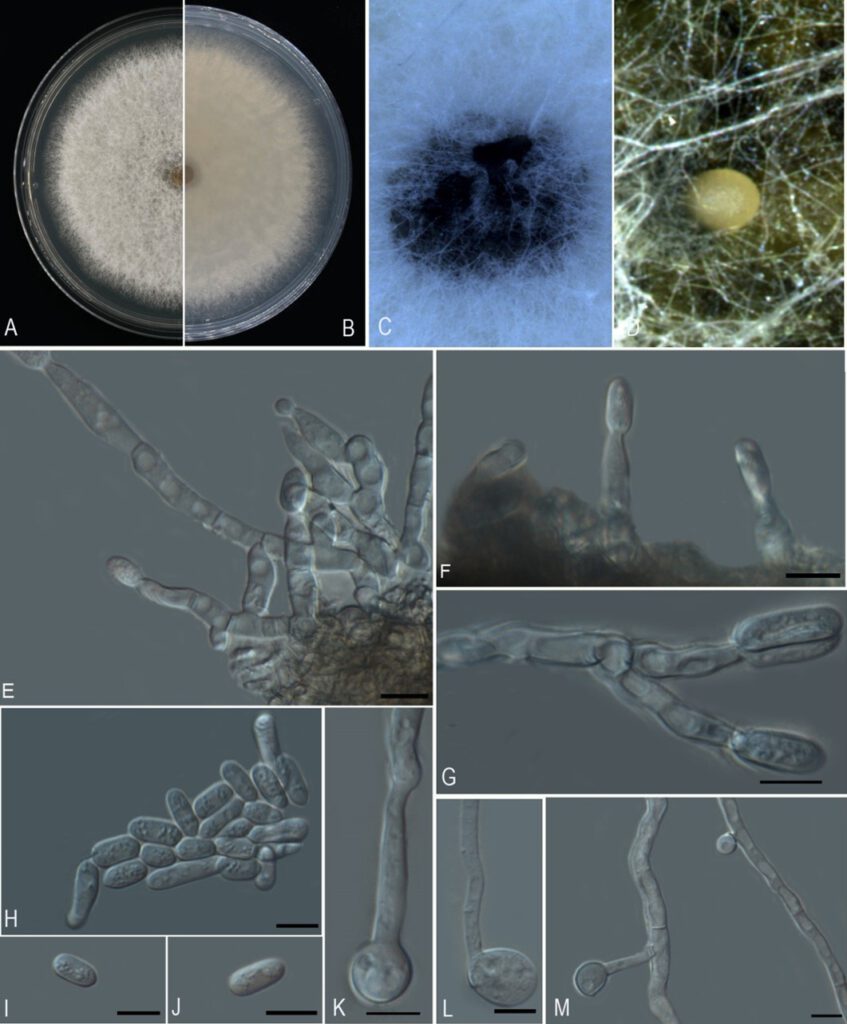Colletotrichum tainanense de Silva, Crous & P.W.J. Taylor, in Silva, Groenewald, Crous, Ades, Nasruddin, Mongkolporn & Taylor, IMA Fungus 10(1): 23 (2019)
MycoBank number: MB 827692; Index Fungorum number: IF 827692; Facesoffungi number: FoF 10690;
Endophytic on C. grandis cv ‘Tomentosa’ twigs. Sexual morph: not observed. Asexual morph on PDA. Conidiomata forms at the base of the PDA, covered with hyphae and pale luteous. Conidiophores 15–30 × 4–6 um (x̄= 21 × 5, n= 50), 1–2 septate, hyaline, pale greenish-grey, cylindrical or partial bending, branched and sparse distribution. Conidia 10–20 × 3–6 μm (x̄= 13 × 5 μm, n= 50), hyaline, smooth-wall, aseptate, subcylindrical to fusiform, straight or slightly curved. Appressoria was round, almost hyaline, dispersely distributed and smooth edges.
Cultural characteristics. Colonies on PDA at 28℃ reaching 80 mm diam, in seven days, growth rate 11–12 mm/day (x̄= 11 mm, n=6), Colonies circular, margin undulate, slightly raised, velvety, greenish glaucous mycelia and colony from above: glaucous; reverse: rosy buff.
Material examined. China, Guangdong province, Huazhou, isolated from healthy leaf of C. grandis cv ‘Tomentosa’, May 2019, YX Shu, (dried culture ZHKU 21-0086); living culture ZHKUCC 21-0101).
Habit and host. Capsicum annuum.
Known distribution. Taiwan.

Morphological characteristics of Colletotrichum tainanense (ZHKUCC 21-0101) A, B. Upper and reverse sides of cultures on PDA 7days after inoculation. C. Fruit body. D. Conidiomata. E–G. Conidiophores with developing conidia. H–J. Conidia on PDA. K–M. Appressoria. Scale bars: 10 μm (E–M).
